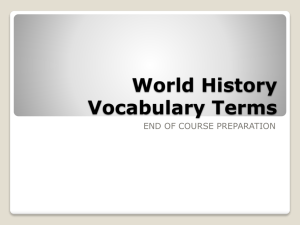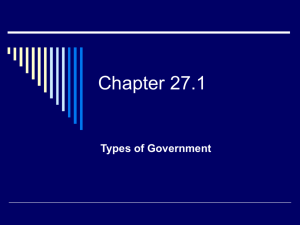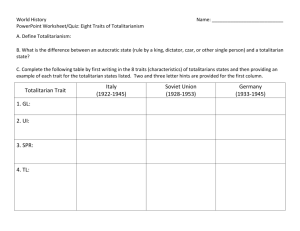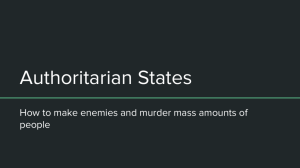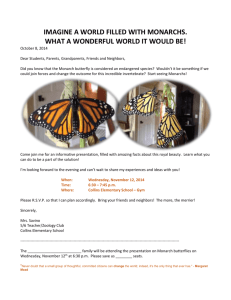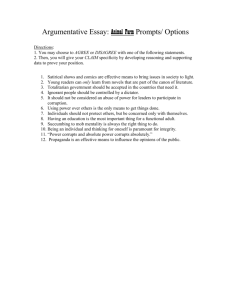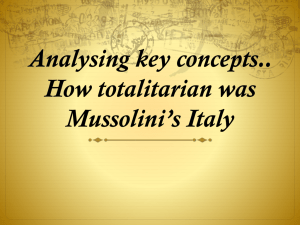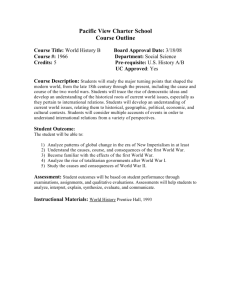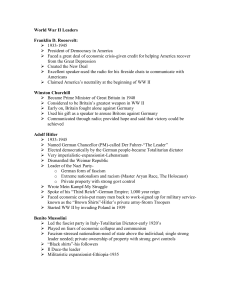Types of Government
advertisement
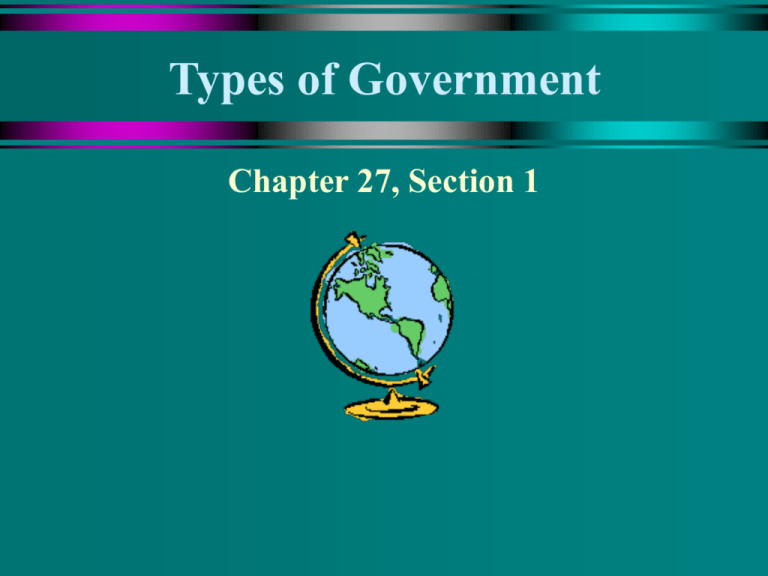
Types of Government Chapter 27, Section 1 Authoritarian Governments • • Governments may be grouped into two broad categories: democratic and authoritarian. In authoritarian regimes, power is held by an individual or group not accountable to the people. Ordinary citizens have little voice. Absolute Monarchs • • • A monarchy is a government with a hereditary ruler. Absolute monarchs have unlimited authority to do as they wish. Today, many countries have monarchs but almost none are “absolute.” Dictators • • • Dictators also exercise complete control but usually take power by force. Most rely on the police and military to stay in power. They often tamper with elections or refuse to hold them. They also limit basic freedoms. Totalitarian Rule • • • • • • Most dictators impose totalitarian rule, in which the government controls almost all aspects of people’s lives. Totalitarian leaders typically have a master plan for the economy and society. They ban political opposition, suppress individual freedom, and dictate what people should believe. To enforce their rules, they control the media and use scare tactics and violence. Adolf Hitler in Germany and Joseph Stalin in the Soviet Union were totalitarian leaders. Today, China, Cuba, and North Korea are usually considered totalitarian states. Discussion Question • How are a dictator and an absolute monarch alike and how are they different? Discussion Question • • • • How are a dictator and an absolute monarch alike and how are they different? Both exercise complete control over the state. However, an absolute monarch inherits the position. A dictator usually takes power by force or is placed in charge in a time of crisis. Constitutional Monarchies • • Almost all monarchies today are constitutional monarchies, in which the power of the hereditary ruler is limited by the country’s constitution and laws. These governments generally follow democratic practices. The people participate in governing and elect officials to make laws. The monarch serves as the ceremonial head of state and national symbol of unity. Republic • • A republic is a democracy with a representative government in which no leaders inherit office. It is also called a representative democracy or a constitutional republic. The United States was the first republic, but now there are many more. Parliamentary System • • • • Few democracies use a presidential system. Most follow Great Britain’s model and use a parliamentary system. The legislature is usually called a parliament and the head of government is a prime minister. Prime ministers and their cabinet ministers are members of parliament, so they help make the laws as well as carry them out. In a parliamentary system, members of parliament elect or approve the prime minister. Someone other than the prime minister (a king, queen, or “president”) serve as head of state. A Presidential System • • In a presidential system, the executive and legislative branches operate independently. The president acts as both the head of government (political leader) and head of state (ceremonial leader).

